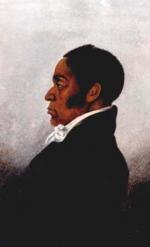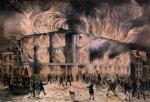Chapter One: The Fight Against Slavery
Every one of the original thirteen colonies, including Pennsylvania, allowed slavery to exist within its borders. Unlike most of the other colonies, however, Pennsylvania contained a vocal antislavery movement, almost from the beginning of the colony's founding. In 1688, just six years after William Penn's arrival, a small group of German-born Quakers issued a stirring statement about the "traffick of men-body" that historians identify as the  first protest against slavery in the North American colonies.
first protest against slavery in the North American colonies.
Most wealthy Quakers in seventeenth-century Philadelphia, including William Penn, owned black slaves. But opinion in the colony slowly changed. It was partly about economics. Slavery was less profitable in the North, because the farms were usually smaller. It was also about faith. Fearing that slavery in America was increasing, the religious protests from Quakers, Methodists, and other denominations grew louder. Over time, the existence of a free black population also changed attitudes, as whites realized the contributions that free blacks made to society. And finally, the coming of the American Revolution introduced fresh ideas and attitudes about human equality.
For many of these reasons, Pennsylvania became the first northern state to adopt an emancipation law. Named the Gradual Emancipation Act, it was passed on March 1, 1780. The end of slavery was not immediate, though. Because the act was gradual, the new rules allowed masters to keep ownership of certain slave children until they were nearly thirty years old.
New groups then came into existence to speed up the end of slavery and promote better lives for free blacks. In 1787, the Pennsylvania Abolition Society was organized in Philadelphia with Benjamin Franklin as its president. The same year a black minister and former slave named Richard Allen founded the
Pennsylvania Abolition Society was organized in Philadelphia with Benjamin Franklin as its president. The same year a black minister and former slave named Richard Allen founded the  Free African Society, a charitable organization to help Philadelphia's poorer African-Americans. Later he formed
Free African Society, a charitable organization to help Philadelphia's poorer African-Americans. Later he formed  Mother Bethel A.M.E. Church, which became the flagship institution of the African Methodist Episcopal faith.
Mother Bethel A.M.E. Church, which became the flagship institution of the African Methodist Episcopal faith.
Other black leaders helped build additional churches and social associations. Over time, this process repeated itself in other smaller towns across the state. These institutions are important to the history of the Underground Railroad because they helped knit together a community of free black residents in Pennsylvania, dedicated not only to each other, but also to fellow African-Americans in slavery.
To understand what motivated black Pennsylvanians of this era, consider the example of Philadelphia businessman James Forten (1766-1842). He was wealthy, one of the richest men, white or black, in Philadelphia. But instead of retreating into a mansion, or enjoying a lavish lifestyle, he devoted himself to the reform of free black society and the destruction of slavery. When abolitionists started up a national newspaper, he bought the largest block of subscriptions. He organized meetings and rallies and when everything else failed, he simply purchased slaves and offered them freedom.
James Forten (1766-1842). He was wealthy, one of the richest men, white or black, in Philadelphia. But instead of retreating into a mansion, or enjoying a lavish lifestyle, he devoted himself to the reform of free black society and the destruction of slavery. When abolitionists started up a national newspaper, he bought the largest block of subscriptions. He organized meetings and rallies and when everything else failed, he simply purchased slaves and offered them freedom.
Forten was not alone. Especially after the 1830s, an increasing number of white abolitionists, inspired by religious faith, took great risks to defeat slavery. They were convinced that enslavement was wrong and should be abolished immediately. Lucretia Mott, a devout female Quaker minister who lived in Pennsylvania, spearheaded the formation of the
Lucretia Mott, a devout female Quaker minister who lived in Pennsylvania, spearheaded the formation of the  Philadelphia Female Anti-Slavery Society in 1833. Her organization worked with other abolitionist committees and individuals to persuade the public that slavery was evil and to help runaway slaves find new lives in the North. In Pittsbugh,
Philadelphia Female Anti-Slavery Society in 1833. Her organization worked with other abolitionist committees and individuals to persuade the public that slavery was evil and to help runaway slaves find new lives in the North. In Pittsbugh,  Jane Grey Swisshelm in 1847 became the first woman in the country to publish an abolitionist newspaper.
Jane Grey Swisshelm in 1847 became the first woman in the country to publish an abolitionist newspaper.
Neither activity was popular in nineteenth-century Pennsylvania, a place that bordered three slave states (Delaware, Maryland, and Virginia) and discouraged radical ideas about social change. When the Anti-Slavery Convention of American Women held their annual meeting in Philadelphia's Pennsylvania Hall in May of 1838, an angry mob burned down the hall only three days after it opened.
Pennsylvania Hall in May of 1838, an angry mob burned down the hall only three days after it opened.
By the beginning of the 1840s, the stage was set for confrontation. The opponents of slavery had grown stronger since 1688, but they were not yet confident of victory. Too many whites still feared and hated blacks. As states and federal government passed new legislation to protect the institution of slavery and further limits the rights of African Americans, more and more of slavery's opponents turned to open defiance of the law.
Most wealthy Quakers in seventeenth-century Philadelphia, including William Penn, owned black slaves. But opinion in the colony slowly changed. It was partly about economics. Slavery was less profitable in the North, because the farms were usually smaller. It was also about faith. Fearing that slavery in America was increasing, the religious protests from Quakers, Methodists, and other denominations grew louder. Over time, the existence of a free black population also changed attitudes, as whites realized the contributions that free blacks made to society. And finally, the coming of the American Revolution introduced fresh ideas and attitudes about human equality.
For many of these reasons, Pennsylvania became the first northern state to adopt an emancipation law. Named the Gradual Emancipation Act, it was passed on March 1, 1780. The end of slavery was not immediate, though. Because the act was gradual, the new rules allowed masters to keep ownership of certain slave children until they were nearly thirty years old.
New groups then came into existence to speed up the end of slavery and promote better lives for free blacks. In 1787, the
Other black leaders helped build additional churches and social associations. Over time, this process repeated itself in other smaller towns across the state. These institutions are important to the history of the Underground Railroad because they helped knit together a community of free black residents in Pennsylvania, dedicated not only to each other, but also to fellow African-Americans in slavery.
To understand what motivated black Pennsylvanians of this era, consider the example of Philadelphia businessman
Forten was not alone. Especially after the 1830s, an increasing number of white abolitionists, inspired by religious faith, took great risks to defeat slavery. They were convinced that enslavement was wrong and should be abolished immediately.
Neither activity was popular in nineteenth-century Pennsylvania, a place that bordered three slave states (Delaware, Maryland, and Virginia) and discouraged radical ideas about social change. When the Anti-Slavery Convention of American Women held their annual meeting in Philadelphia's
By the beginning of the 1840s, the stage was set for confrontation. The opponents of slavery had grown stronger since 1688, but they were not yet confident of victory. Too many whites still feared and hated blacks. As states and federal government passed new legislation to protect the institution of slavery and further limits the rights of African Americans, more and more of slavery's opponents turned to open defiance of the law.


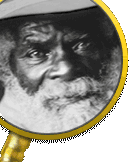





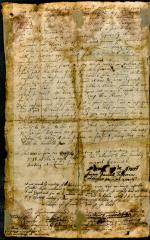
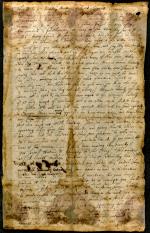
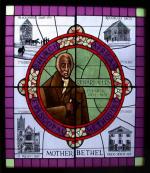
![A Group of Philadelphia Abolitionists with Lucretia Mott [seated second from the right]. A Group of Philadelphia Abolitionists with Lucretia Mott [seated second from the right].](cache/small/1-2-1BA3-25-ExplorePAHistory-a0n0v8-a_349.jpg)
